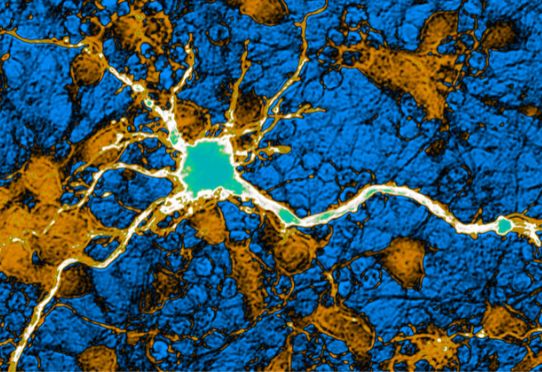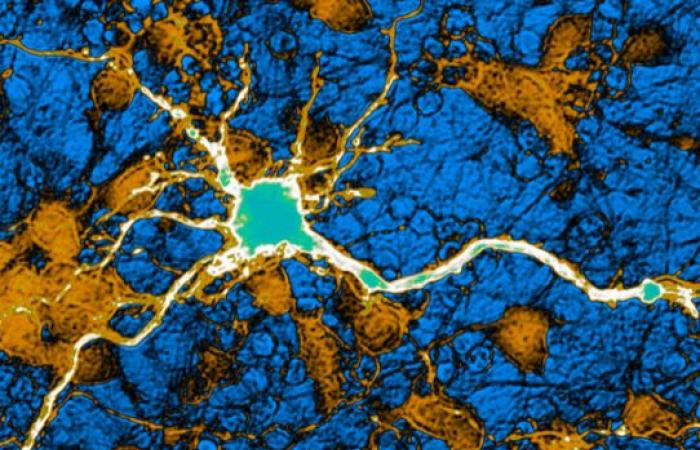Alexis Elbaz is a neurologist and research director Inserm. His goal? May Parkinson’s disease no longer be inevitable. By discovering risk factors or other protective factors, his work provides data to consider prevention of the disease, the prevalence is only growing due to the aging of the population.
An article to be found in Inserm magazine n°62
Alexis Elbaz is a key figure in Parkinson’s disease research in France. His numerous works help to enlighten the international community on the risk factors of this disease, its links with the environment and genetics, and its inexorable progression given the aging of the population. For the record, Parkinson’s disease is the second most common neurodegenerative disease after Alzheimer’s disease and affects nearly 170,000 people in France.
Neurologist at the Pitié-Salpêtrière hospital in Paris and Inserm research director in Villejuif, Alexis Elbaz spent his childhood in Spain before moving to France in 1984 to begin his medical studies. On this occasion, he did an internship in neurology which served as a trigger. “ I was totally passionate about the discipline. The brain remains very mysterious, and much remains to be learned about its functioning. In addition, the field is very vast with numerous subspecialties: abnormal movements, multiple sclerosis, dementias, etc. », he describes. Thus, he chose to do his internship in this field. But it’s still too little for this man who is a fan of multifunctional devices and who decides to combine it with a diploma in statistics. “ Research quickly interested me, I particularly wanted to work on epidemiology in neurology “, he specifies. And in fact, he devoted his thesis to it.
He then specialized in Parkinson’s disease and began consultations on abnormal movements at the Saint-Antoine hospital in Paris in 1998, then joined the Pitié-Salpêtrière hospital in 2007. This pathology interests me in particular for the clinical dimension given to the diagnosis and monitoring of patients. The clinical examination is very detailed in describing the manifestations of the disease, which are very heterogeneous from one person to another. And the discussions with patients did the rest to guide my research, because of this recurring question: why do I have this disease? How to explain it? From there, my goal was to provide them with answers. »
As a duty to respond
After a postdoctoral fellowship in the United States, Alexis Elbaz passed the competitive examination for research fellow at Inserm in 2001, then became research director in 2009. He began his work in the Epidemiological Research in Neurology and Psychopathology unit, later renamed Neuroepidemiology. In 2012, he finally joined the Research Center in Epidemiology and Population Health in Villejuif, where he still works as co-director of the Exposome team, heredity, cancer and health. With now more than twenty years of research under his belt, the neurologist has already published major results. For example, he established a link between exposure to pesticides and the risk of developing Parkinson’s disease among farmers. “ This work contributed to the recognition of this pathology as an occupational disease in the individuals concerned, giving right to compensation. France was a pioneer in this approach in 2012 », he recalls. It establishes another link between the place of residence of the French and the risk of developing the disease. « Using the National Health Data System (SNDS) database, and in partnership with Public Health France, we have shown that people living in heavily agricultural areas, particularly wine-growing areas, are more at risk than others. “, he specifies.
Another source of data for his research: the E3N cohorta epidemiological study with women in National Education of which he is the scientific co-director. “ Around 100,000 women were included in 1990 and have been followed ever since, with, more recently, the recruitment of their spouses and children, and soon grandchildren. This very long follow-up is fundamental for us. This is the only way to effectively search for risk factors preceding the onset of the disease, which has a very progressive evolution, with several years passing between the start of neurodegeneration and diagnosis. », he clarifies. Using this cohort, Alexis Elbaz established a link between the level of physical activity in midlife in women and a reduced risk of Parkinson’s disease later.. At the same time, he has broadened his field of research for several years by studying motor performance during aging in the general population and the factors likely to explain their heterogeneity depending on the person.
A prize and new perspectives
Recently, this rich journey was crowned by the prize from the Éliane and Gérard-Pauthier foundation, under the aegis of the Fondation de France. An invitation to continue the new work in progress. “ There is currently no preventive treatment. To try to identify possible avenues, we are looking in the SNDS database and in the E3N cohort for treatments taken in different indications which would be associated with a reduced risk of subsequently developing Parkinson’s disease. This seems to be the case for some statinsused against excess cholesterol “, he specifies. His team is also looking for epigenetic signatures that predict the risk of developing the disease. These chemical marks on DNA do not modify its sequence but alter gene expression and can be transmitted from generation to generation.
« All of my work is part of a prevention objective.summarizes Alexis Elbaz. By identifying factors associated with the disease, I hope to contribute to the implementation of preventive measures to try to curb the expected increase in the number of cases. Between 2010 and 2030, due to the aging of the population, the prevalence will increase by 60% and we will also have to deal with more advanced forms that are difficult to treat due to the longer life expectancy of patients. I am hopeful that we will get there, because the scientific community is in the process of changing paradigm, moving from a certain inevitability to a desire to prevent disease. In the United States, for example, the Senate passed a law (National Plan to End Parkinson’s Act) to develop prevention projects and improve treatment. Our work is part of this trend, with I hope a concrete benefit for patients in the years to come », he concludes.
Alexis Elbaz is Inserm research director, co-director of the Exposome team, heredity, cancer and health at the Center for Research in Epidemiology and Population Health (unit 1018 Inserm/University of Paris-Saclay/University of Versailles – Saint-Quentin-en-Yvelines), in Villejuif.
Author: A.R.
Also read
Parkinson’s disease
Parkinson’s disease is a progressive neurodegenerative disease, characterized by the destruction of…











